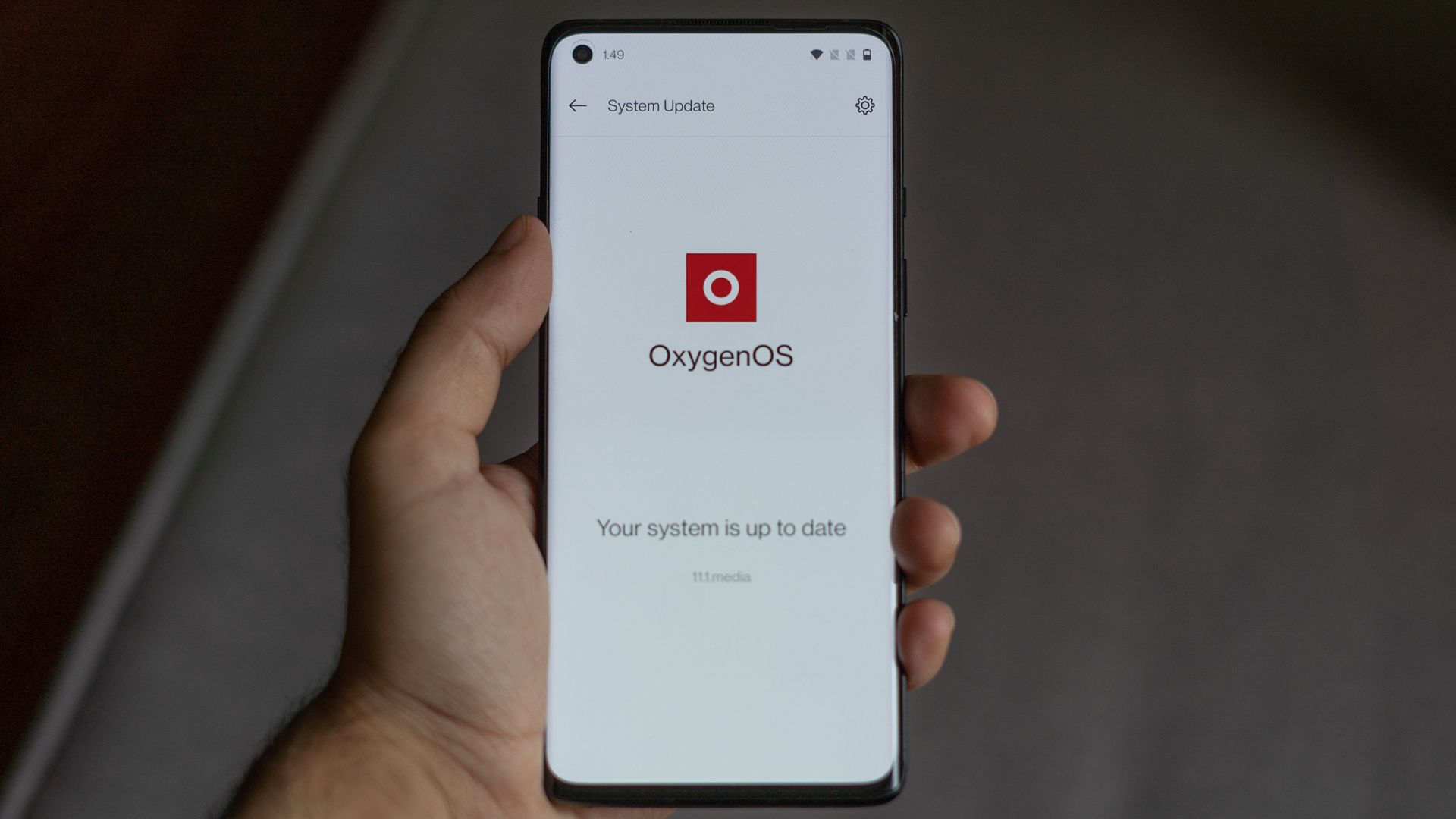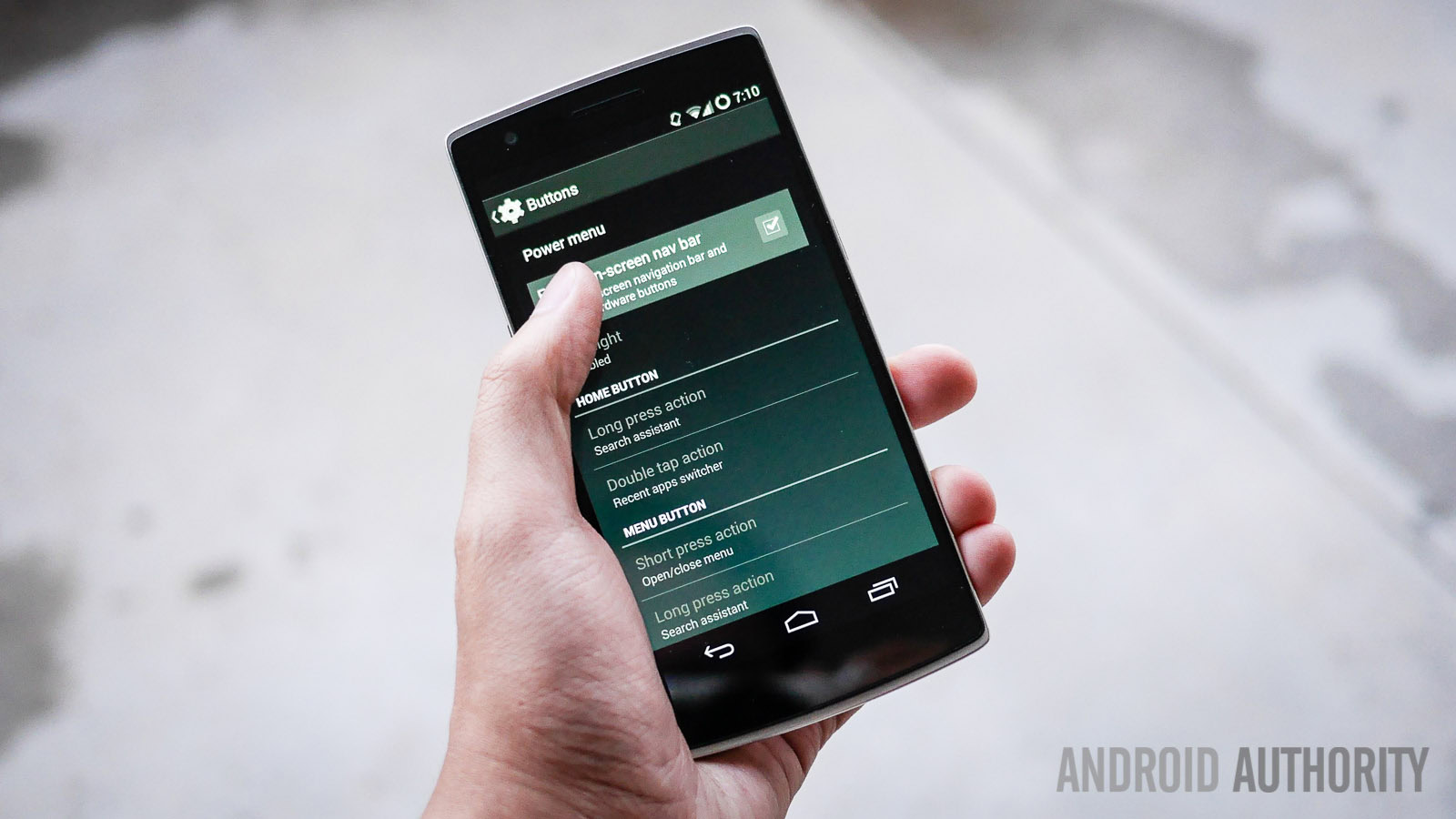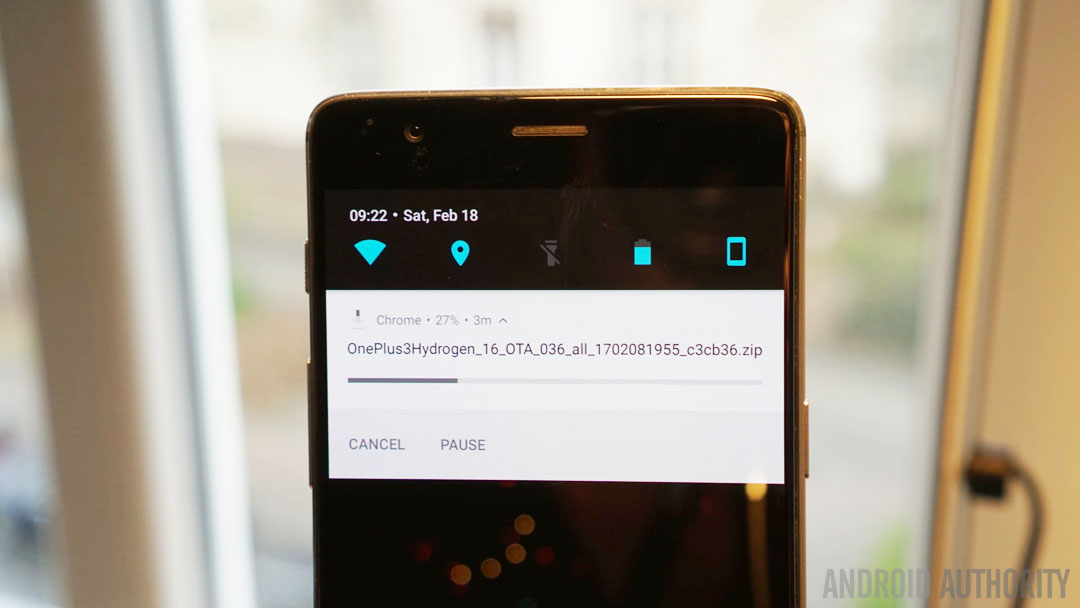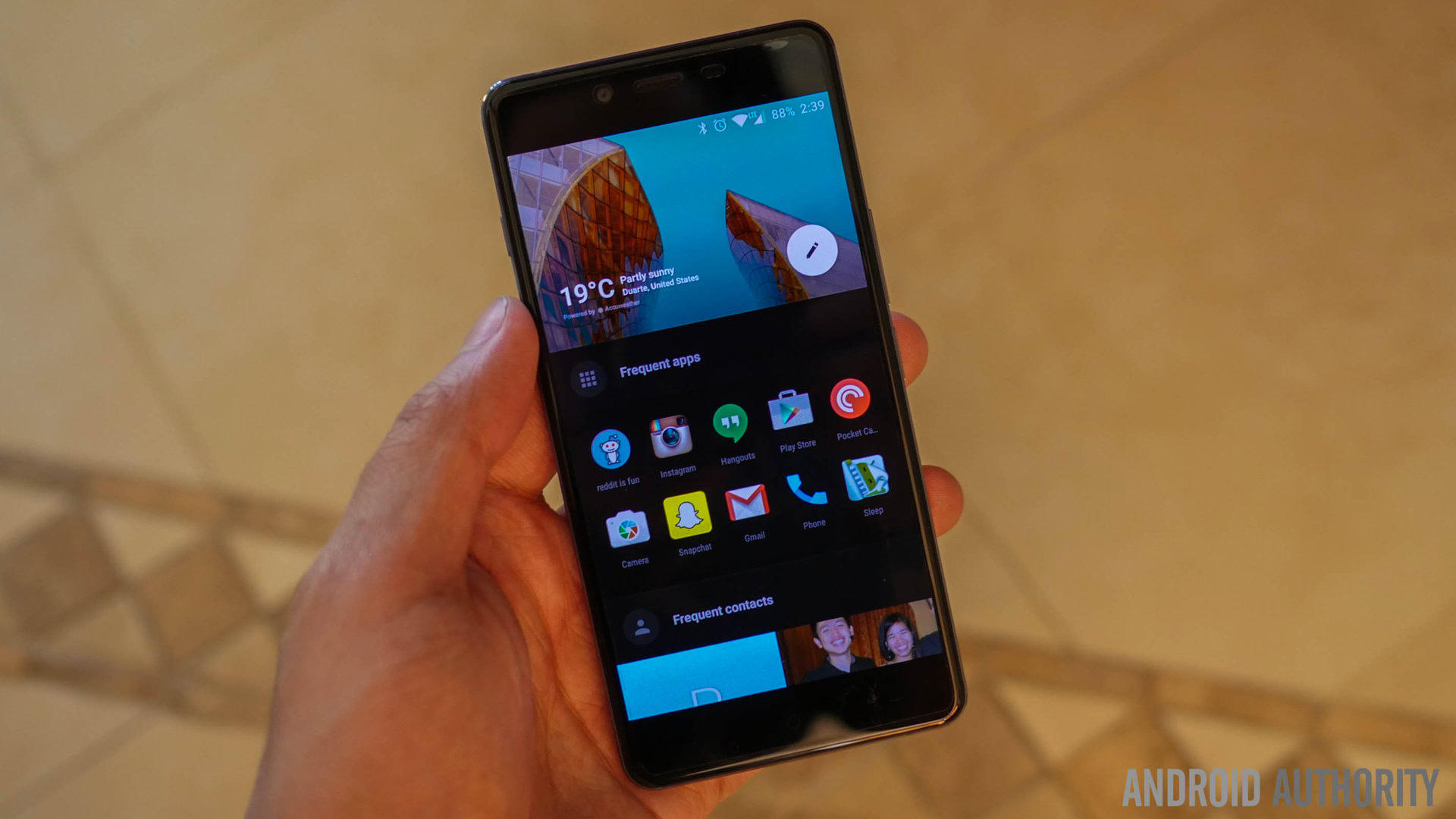Affiliate links on Android Authority may earn us a commission. Learn more.
The evolution of OnePlus software: From Cyanogen to Oxygen, and beyond
Published onSeptember 25, 2020

Oxygen OS 11 is quickly making its way to OnePlus’ smartphones after Google made Android 11 public. The OS offers the latest Android features combined with OnePlus’ in-house tweaks. However, the company hasn’t always had staunch control over the quality and speed of its smartphone software. In fact, OnePlus’ software started out closely tied to the ROM modding scene back in 2014.
If you’re interested in OnePlus’ humble beginnings or simply want to see how far the company’s software features have come, join us as we zip through the evolution of OnePlus’ smartphone software.
Breaking away from the mod scene

The OnePlus One shipped with Cyanogen OS as its operating system — a commercially developed version of CyanogenMod. Back in the heyday of enthusiast Android spin-off versions, CyanogenMod was arguably the most popular community-developed custom ROM. The commercialization of the project as Cyanogen OS caused some controversy within the community, and some users didn’t care for the added software partnerships (bloat). But this was probably necessary to ensure high-quality support for devices running Cyanogen as their primary, out-of-the-box OS.
So, why did OnePlus use Cyanogen OS in the first place? Well, it offered a reasonably stock-like experience, complete with high performance, a powerful theming engine, navigation bar options instead of buttons, AudioFX engine, and a few other quality-of-life tweaks. At the time, Samsung and the other big manufacturers offered positively bloated UIs. The OnePlus One was a breath of fresh air comparatively. Not to mention that ties to the modding community granted the handset instant appeal to the enthusiast crowd.
Cyanogen OS was a breath of fresh air in the age of bloated UIs

Cyanogen OS actually shipped on a number of other smartphones, including the Wileyfox Swift and Lenovo ZUK Z1. Microsoft also reportedly invested in the company. Although if you’ve never heard of those phones, it probably speaks to the eventual fate of the Cyanogen project. Cyanogen Inc, the controversial commercial company, shut down in 2016.
OnePlus also endured some controversy in India, which saw Micromax gain exclusive access to Cyanogen OS in the region at the expense of OnePlus customers. This ultimately kicked OnePlus into developing its own software. The company quickly began work on its own operating system, which would come to be known as Oxygen OS. But before we get there, the company had to tie-up its Chinese development too.
Color OS and Hydrogen OS: not just for China
While the original OnePlus One shipped with Cyanogen OS in most of the world, Chinese customers ended up with Oppo’s Color OS. The two companies share some resources as part of the BBK Electronics brand. But OnePlus was keen to forge its own identity and needed a custom OS to do so.
Work on its in-house operating system yielded Hydrogen OS for Chinese OnePlus One handsets. A beta version was available for the OnePlus One before the OnePlus 2 appeared in mid-2015, which users could manually flash if they wanted.

The first Hydrogen OS version controversially didn’t feature a separate app drawer. The Quick Settings menu swiped up from the bottom of the screen, and it was missing a lot of much-loved features available in the global model. The software also included a market for apps outside the Google ecosystem and several other in-house apps. It was experimental, to say the least.
Hydrogen OS remained a China-specific release for several generations of OnePlus handsets. Hydrogen and Oxygen OS eventually merged in 2016 to expedite the updating process.
Enter Oxygen OS 1.0 and 2.0, a buggy beta
OnePlus juggled a few too many operating systems with its first handset. The scene became even more complicated when Oxygen OS 1.0 rolled around for the OnePlus One in April 2015. OnePlus One owners had to manually flash the new OS, so it definitely wasn’t for everyone. The in-house operating system borrowed heavily from Color and Cyanogen OS, with a stock-like interface, quick settings menu, and app launch gestures.
It wasn’t until the OnePlus 2 that Oxygen OS shipped out-of-the-box. The phone launched with Oxygen OS for global variants and Hydrogen OS for China.
Oxygen OS initially struggled to fill in the gap left by Cyanogen
The short development timeframe resulted in early Oxygen OS builds, based on Android Lollipop, being a buggy mess despite their very stock-like design. App crashes and freezes weren’t super common, but it was a noticeable part of the early experience. We had the same software reservations about the smaller OnePlus X too.

To its credit, Oxygen OS was well ahead of the curve with a dedicated Dark Mode and App Permissions despite running on Lollipop. The software also featured on-screen navigation keys, gesture shortcuts, and “Shelf” as a Google Now screen replacement. OnePlus definitely wanted to carry over a number of features from the Cyanogen days, but it didn’t nail the experience perfectly on the first try.
Oxygen OS 3.0: Straightening things out
Fortunately, OnePlus works quickly and its in-house software ended up in a much better state with the OnePlus 3 and Oxygen OS 3.0. The move to Android Marshmallow helped polish the rough edges. Key features didn’t change a whole lot, but customization began to play an increasingly key part of the mission statement. Configurable soft-keys, quick wallpaper swapping, and Shelf widgets all began to create a software experience for OnePlus to call its own.
See also: OxygenOS – 6 features you need to know about
Finding its own identity with Oxygen OS 4.0 and 5.0
The first three generations of Oxygen OS felt like patching up the gap left by the Cyanogen OS debacle. But the fourth time was the charm for OnePlus. The company’s software stepped into a life of its own with Android Nougat and refinements up until OnePlus 5.
For starters, bugs and crashes became a thing of the past. Oxygen OS 4.0 also brought with it a reading mode which turned the entire screen to grayscale, a blue light filter, do not disturb mode, and a number of cosmetic changes, in addition to fan favorites like dark mode. OnePlus retained a stock-Android style overall, but the custom tweaks started to become more prominent.
OnePlus introduced many popular features before Google's Android
OxygenOS 5 and Android Oreo continued in the same vein, offering iPhone-style navigation gestures, an improved Gaming mode, Parallel Apps, Face Unlock, and yet more UI tweaks. The camera apps also saw some love, along with a video editing suite to bulk up the brand’s multimedia capabilities. OnePlus’ changes have been rather minor generation to generation. But updates add up, and the past few years have seen OnePlus’ UI go from an underdog to one of the best in the business.
Into the modern-day
Oxygen OS jumped from version 5.0 to 9.0 with the arrival of the OnePlus 6T. The version introduced a new UI to coincide with Android Pie, along with adaptive battery support, new gesture navigations, Do Not Disturb mode with adjustable settings, and Gaming mode 3.0. The custom features really started to pile up this generation.
OnePlus continued to innovate and bring new features to its older handsets, but this clearly began to wear on the old stock-like ethos. More recent versions of its OS include Zen Mode and Dark Mode 2.0. OnePlus also dropped its Shelf for Google Feed, which was probably for the best. Yet, its range of tweaks and theming options has continued to grow to cater to the customization crowd.
OnePlus is beginning to put a bigger stamp on its Android experience
Version 10.0 introduces yet another UI redesign, enhanced location permissions, and new Quick Settings icon customizations. The OS added in Smart display info to ambient display, Game Space for a sleeker gaming experience, and message spam blocking. Piece by piece OnePlus has built a version of Android that feels very much its own. The modern bells and whistles approach couldn’t be more different from the Cyanogen or even early Oxygen OS days.
Oxygen OS 11 and the future
With the essentials well and truly nailed down, OnePlus has moved into more noticeable changes with most recent iterations like Oxygen OS 11 based on Android 11. Version 11 adds in a new always-on display design and further tweaks to dark mode. Other UI adjustments ease single-handed use. There’s also a new magazine-style for the Gallery app and other UI elements designed for aesthetics rather than pure function.
OnePlus interview: Behind the scenes with the controversial Oxygen OS 11 update
With the latest version of its OS, OnePlus is stamping its footprint on Android to the chagrin of some old-school enthusiasts. Some have likened the new look to Samsung’s One UI rather than OnePlus’ stock Android roots. But in truth, OnePlus has been building up its own feature set for generations. The UI changes are just more noticeable this time around.
The love affair with enthusiasts is making way for more mainstream appeal
Looking forward, it’s clear that OnePlus is growing more ambitious and Oxygen OS is a core part of its approach. Talk of stock has made way for “burdenless” software. The company has begun adding region-specific features like OnePlus Scout, and even preloads the Facebook app. OnePlus’ focus has gradually shifted from the bare-bones enthusiast market to striving for more mainstream appeal.
Whatever the future holds for Oxygen OS, a more heavy-handed approach to customizing Android is bound to be controversial. Even though imprinting its own feature has been part of OnePlus’ approach for years.
OnePlus smartphones and software have come a long way from its early experiment with Cyanogen OS. Humble roots based in the custom ROM community and experiments with Hydrogen OS have culminated in a feature-rich operating system that’s been at the cutting edge of Android in recent years. OnePlus has never really offered a bare-bones stock experience, but more recent Oxygen OS generations are increasingly mainstream in appearance. Whether that’s for better or worse remains to be seen.
Do you have a favorite era of Oxygen OS? Let us know in the comments below.